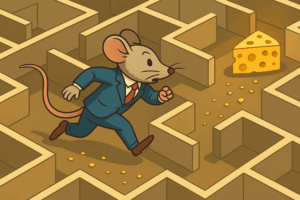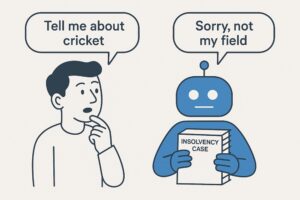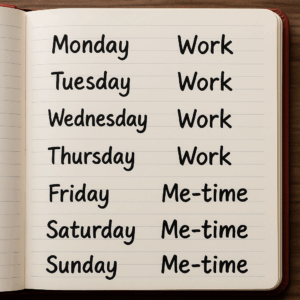I shut my insolvency practice for a month… an entire month. And VAi didn’t blink.
From mid-October to mid-November 2025 I did something most insolvency practitioners would regard as utter madness: I stepped completely away from day-to-day practice and went trekking in the high Himalaya in Nepal.
No Teams calls. No emails. No ‘just a quick view on this, Paul’.
And yet… enquiries for insolvency support didn’t stop. Directors were still under pressure. Creditors were still issuing petitions. Lawyers were still trying to unpick unfamiliar parts of the Insolvency Act. Other Insolvency Practitioners were still looking for ‘second opinions’.
So who was helping them?
VAi was.
While I was at altitude, VAi – my insolvency co-pilot – quietly got on with the job.
Two and a quarter years of testing before I dared do this
VAi has been live for around two and a quarter years. In that time I’ve monitored its outputs obsessively:
- checking technical accuracy against statute and rules
- nudging its tone towards the empathy and plain English I expect
- watching its real-world interaction with directors, accountants, IPs and lawyers
- watching how it handles real-life cases, not just textbook scenarios
Well before autumn 2025 I already knew two things:
- VAi was consistently giving advice at the level I would expect from an experienced IP.
- It wasn’t just answering questions; it was helping users think, plan and execute.
That’s why I was willing to let it sit in the ‘end office’ for a month while I went up into the mountains.
What happened while I was away
I’m still reading the reports I get of VAi’s interactions, but so far two reports stand out as they speak volumes about how deeply VAi can engage. One of those reports alone was 38 pages long!
Without naming anyone, here’s what those conversations looked like…
1. A non-insolvency law firm drilling into a highly technical appointment issue
This user faced a thorny question about an administration appointment in the shadow of a winding-up petition.
Over the course of a long interaction, VAi:
- walked through the statutory framework step by step
- distinguished clearly between the different routes into administration
- highlighted where notice requirements and timings can make or break an appointment
- suggested practical next steps: what to ask the other side for, what to record, and how to frame correspondence
- drafted follow-up emails that were firm, neutral and procedurally focused
This wasn’t a quick ‘yes/no’ answer. It was the sort of structured discussion you would expect if you stuck your head round the door of a senior IP’s office and said, ‘Can I just run this past you?’
2. An experienced insolvency practitioner wrestling with director-related re-use of company names restrictions
Here, an experienced insolvency practitioner wrestled with some incredibly complex S216 issues and was clearly struggling to complete, and best, advise their client – they needed someone experienced to bounce some really thorny issues off.
Again, over a series of detailed prompts, VAi:
- unpacked the legislation in plain English
- set out the different routes and exceptions, with the risks of each
- helped the IP explore how those options interacted with their client’s wider commercial plans
- drafted clear, client-friendly explanations and email wording they could refine and send
- flagged where specialist insolvency input and/or court involvement would still be sensible
In other words, VAi behaved like an experienced insolvency specialist parachuted into the IP’s team – collaborative, practical and focussed on outcomes.
This is not ‘FAQ with lipstick’
The striking thing about both these reports is the depth of interaction.
Users weren’t asking, ‘What is administration?’
They were:
- challenging validity of appointments
- probing notice and timing issues
- exploring how specific sections of the Act applied to messy real-world facts
- asking VAi to help frame arguments and strategy, not just recite rules
- using it to draft and re-draft emails and responses as the situation evolved
VAi coped admirably.
It didn’t just quote legislation; it applied it.
It didn’t just list options; it weighed them and helped users think through the consequences.
It didn’t just draft ‘a letter’; it worked iteratively with the user to get the tone and strategy right.
That’s what I mean when I say VAi is as good as having a fully experienced IP present in the room.
Safeguards: AI as co-pilot, not unsupervised pilot
Let me be absolutely clear: I am not advocating that IPs disappear to the mountains and leave AI running wild.
A few important safeguards were (and remain) in place:
- Human in the loop. Every user is encouraged to sense-check outputs and, where appropriate, to seek formal advice from a real IP (me or another). VAi is designed as a co-pilot, not a replacement office-holder.
- Continuous monitoring. I am still working through the logs from that month, checking whether I would have given the same guidance. So far the answer is: ‘Yes – and in some areas, VAi was more thorough than many humans under time pressure.’
- Scope-bound. VAi is tightly focussed on the English & Welsh corporate insolvency regime. It is not trying to be all things to all people.
- Process-driven. VAi has been trained to ask clarifying questions, flag risk, and signpost when something is beyond its remit.
In other words, I’m comfortable trusting VAi because I know its limits and its strengths.
A question for fellow IPs: could you do what I did?
So here’s the challenge I want to pose to other insolvency practitioners:
Do you have enough confidence in your systems to step away for a month and know that directors, accountants and lawyers who provide you with leads will still be properly supported?
Not just ‘someone will pick up the phone’, but:
- enquiries are captured and responded to quickly
- technical queries get high-quality, consistent answers
- outputs are provided which include best, case specific, responses
- options are being explored fully, not just the ‘standard’ route
If your honest answer is ‘no’, then you have a choice:
- Carry on hoping that sheer personal effort will cover the gap; or
- Start building an AI-enabled practice where a trusted co-pilot like VAi quietly carries a large part of the load.
What this means for the profession
To me, that month in the Himalaya proved three things:
- AI can already operate at a genuinely professional level in a well-defined domain like corporate insolvency – not just as a toy, but as a serious support tool.
- Directors, IPs and lawyers are starting to become more ready than before to use it in depth. The level of questioning and the volume of interaction in those two conversations alone show there is a growing appetite for detailed, iterative support.
- Freeing IPs from being ‘human FAQs’ is good for everyone.
- IPs can focus on judgment, strategy and stakeholder management.
- Referrers and clients get faster, clearer guidance at all hours.
- Firms can build resilience that doesn’t depend entirely on one over-stretched individual.
If you’d like to see what VAi can do for you
VAi isn’t theory. It has already:
- supported IPs on complex, live cases
- given non-insolvency lawyers and accountants the confidence to advise their clients properly
- handled detailed, high-stakes questions while I was up a mountain
If you’re an IP, accountant or lawyer and you’d like to:
- see anonymised examples of these – or other – interactions,
- test VAi against some of your own real-world scenarios, or
- explore how an insolvency co-pilot could sit alongside your existing systems,
then now is the time to start the conversation.
Because if my practice can safely keep serving people while I’m trekking in the high Himalaya, the real question isn’t ‘Can AI do this?’
It’s ‘Can you afford not to have this level of support in your own firm?’






